Escape. That’s the point, isn’t it? It’s why Walt Disney built a protective berm around Disneyland over sixty years ago, and why we flock to the parks today. We want to escape our ordinary lives, become heroes, and be carried away into cinematic worlds designed (very intentionally) by filmmakers. The best theme parks bring us to unthinkable places and unimaginable times, presenting unbelievable sights that change us, spark us, and inspire us to learn more.
From the cursed corridors of Revenge of the Mummy, to the unthinkable wonders within Mystic Manor and into the streets of our favorite comic book with The Amazing Adventures of Spider-Man, Park Lore’s Modern Marvels series is all about tackling the greatest adventures you’ll find at theme parks around the globe. And today, we induct another unimaginable wonder into our Modern Marvels series… a ride that many argue is one of the greatest modern E-Tickets ever; the absolute pinnacle of what Disney Imagineering can create; a “bucket list” thrill ride located at a far-flung, must-visit Mecca for all Disney Parks fans.
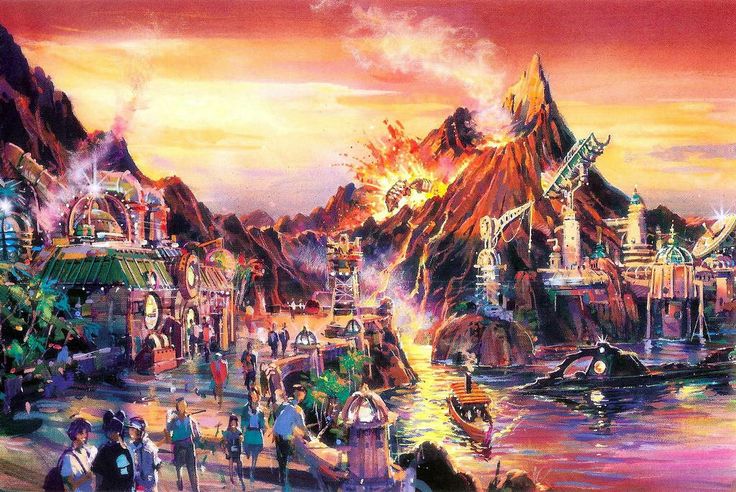
We can only be talking about Journey to the Center of the Earth… a contender for the best ride Disney has ever created. Today, we’ll dig deep to unearth the origins of this science-fantasy adventure, explore Disney’s long-running relationship with the works of Jules Verne, take a virtual ride, and see one of the world’s best Audio-Animatronics figures ever, concealed deep within this subterranean mystery ride. Does this Journey give up to the international hype? We’ll find out…
And before we head off, remember that you can unlock rare concept art and audio streams in this story, access over 100 Extra Features, and recieve an annual Membership card and postcard art set in the mail by supporting this clickbait-free, in-depth, ad-free theme park storytelling site for as little as $2 / month! Become a Park Lore Member to join the story! Until then, let’s start at the beginning…
Great minds make great stories…
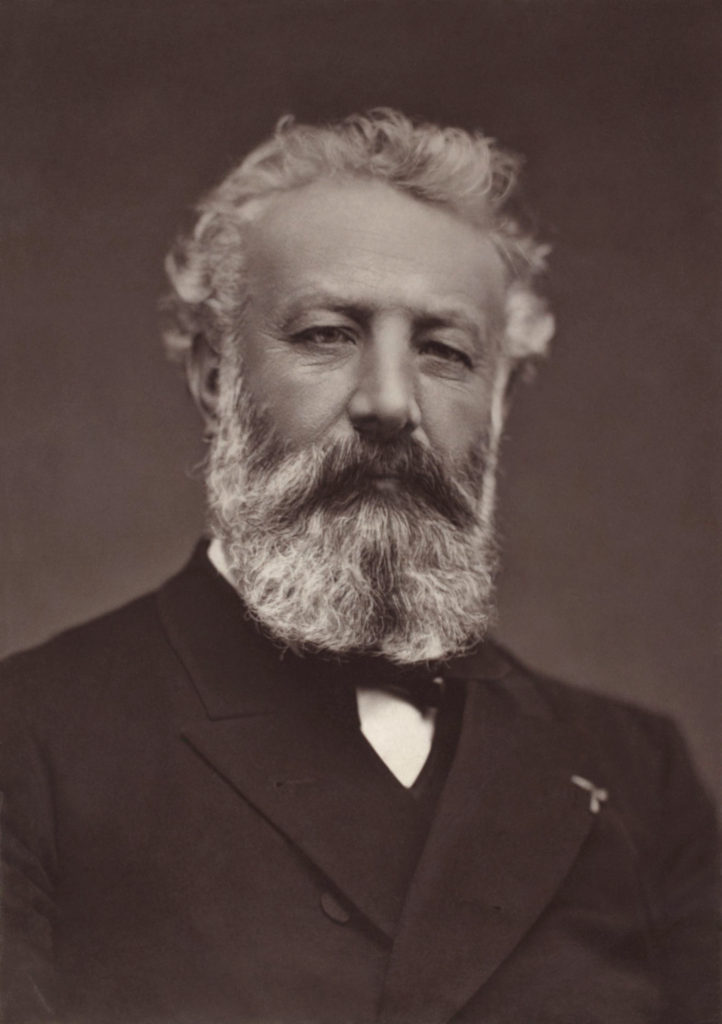
If we want to understand what may be the most adventurous Disney Parks ride on Earth, we certainly need to begin with the origin of the adventure.
And when it comes to exploration, discovery, and romance, there’s no author more prolific, revered, or deeply tied to the genre than Jules Verne. The French novelist, poet, and playwright produced a library of works spanning the 19th century, but many of his best known titles belong to a 54-novel series called the Voyages Extraordinaires.
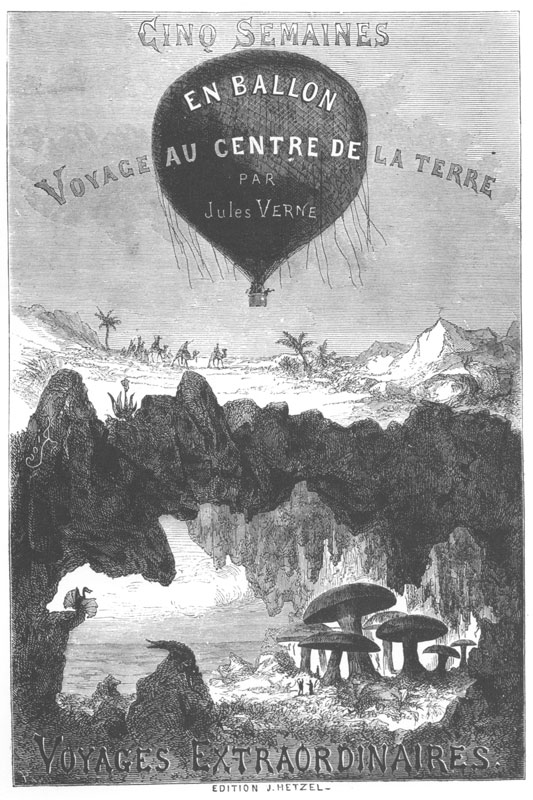
Around the World in 80 Days, 20,000 Leagues Under the Sea, and From the Earth to the Moon represent just a few of the more-than-four-dozen novels Verne produced for the series, and each is renowned not only for its perfectly-paced storytelling and detail, but for the actual information provided in each. Verne’s novels were coined “encyclopedic novels” for the wealth of information they contain, giving readers the distinct feeling that they’re actually learning about biology, geology, astronomy, botany, archaeology, and oceanography by reading.
(Verne himself always denied the popular notion that he’d invented “science fiction” as a genre. He also refuted claims that he had a prophetic vision of tomorrow, though it’s true that – absent much available data at the time – his predictions would be proven surprisingly accurate in the 20th century… For example, Verne’s calculations and trajectories for cannon-launching projectiles From the Earth to the Moon are reportedly eerily accurate given that the first powered airplane flight was still forty years away when it was written!)
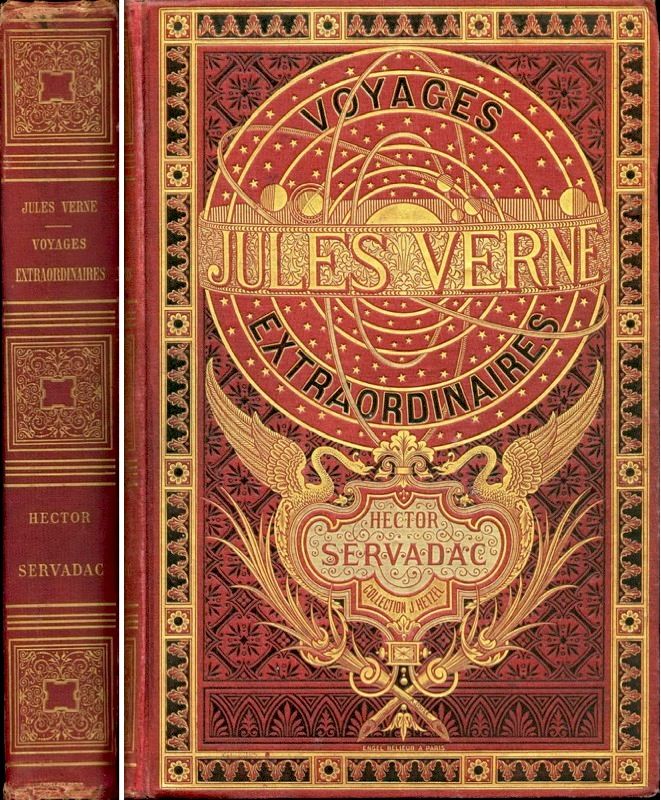
In any case, the exhaustive and extensive research Verne did before sending his protagonists to the deepest oceans or the farthest reaches of space created in the Voyages Extraordinaires an exhilarating, spell-binding series fill with adventure, romance, science, and exploration all drenched in the red velvet opulence of the Victorian era. To that end, Verne’s stories have also served as spectacular springboards for films, television shows, radio plays, poems, and songs…
…Great stories make great movies…
In most of the world, copyright laws protect artistic works, books, music, movies, and characters, ensuring that they belong to and are used exclusively by their owners… with some exceptions. In the United States, any book published prior to 1925 is considered a part of the public domain; that is, adaptable, publishable, and derivable by absolutely anyone. That makes Jules Verne’s spectacular, timeless, and adventurous 1890s effectively “owned” by the public… and thus, a perfect story to adapt.
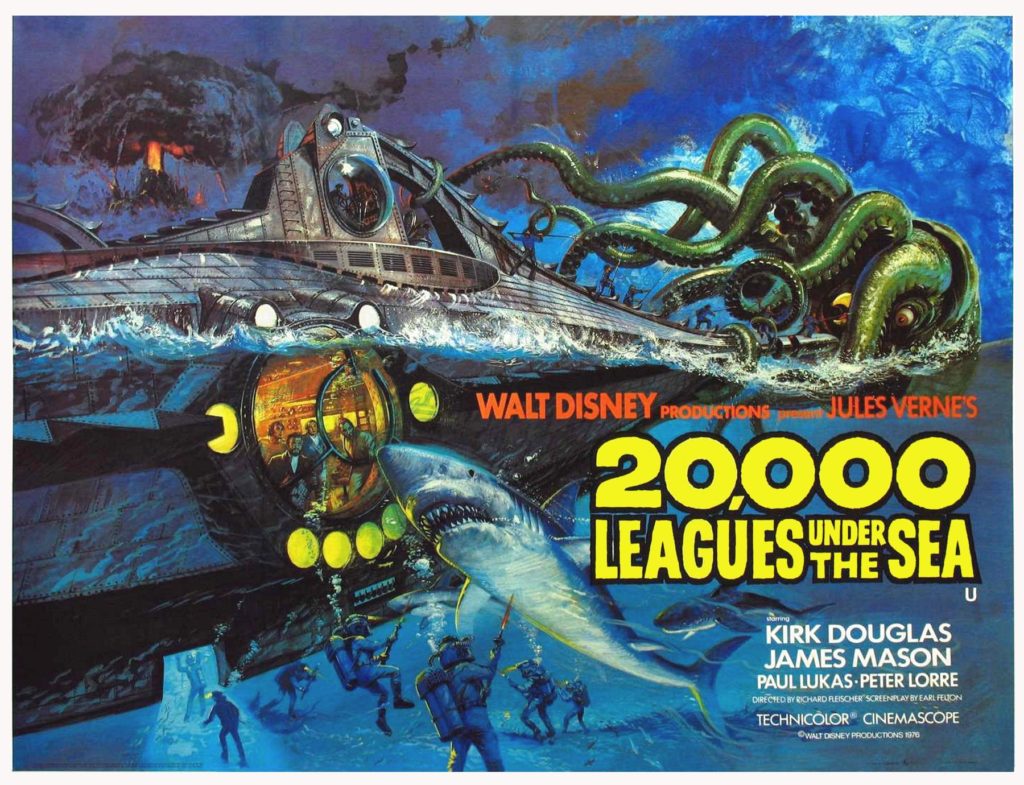
In 1954 – one year before Disneyland opened – Walt Disney Productions unveiled a blockbuster-hit film – 20,000 Leagues Under the Sea. The first film that Walt himself produced, the stunning cinematic wonder (which still holds up today) was, of course, an adaptation of Verne’s novel following the undersea exploits of the notorious Captain Nemo (played by James Mason) and his submarine, the Nautilus.
The iconic design work of Disney Legend Harper Goff established the film’s unique retro-futuristic fantasy styling by way of his elegant and iconic vision of the Nautilus… known today as an early example of what we now call “steampunk.” The elaborate Victorian vehicle and the amazing adventures it encountered were a global sensation, establishing the fantasy adventure genre in theatres.

So it’s really no surprise that, just five years later, 20th Century Fox decided to adapt another Jules Verne novel. 1959’s Journey to the Center of the Earth even cast James Mason (Disney’s Nemo) as Sir Oliver Lindenbrook, leading an expedition across underground oceans, through volcanic vents, among living dinosaurs, and along seas of lava.
The film was a box office hit, ensuring further adaptations of the extraordinary voyages. Like clockwork, Warner Bros. released RKO Pictures’ 1958 adaptation of From the Earth to the Moon – a loose adaptation of Verne’s novel.
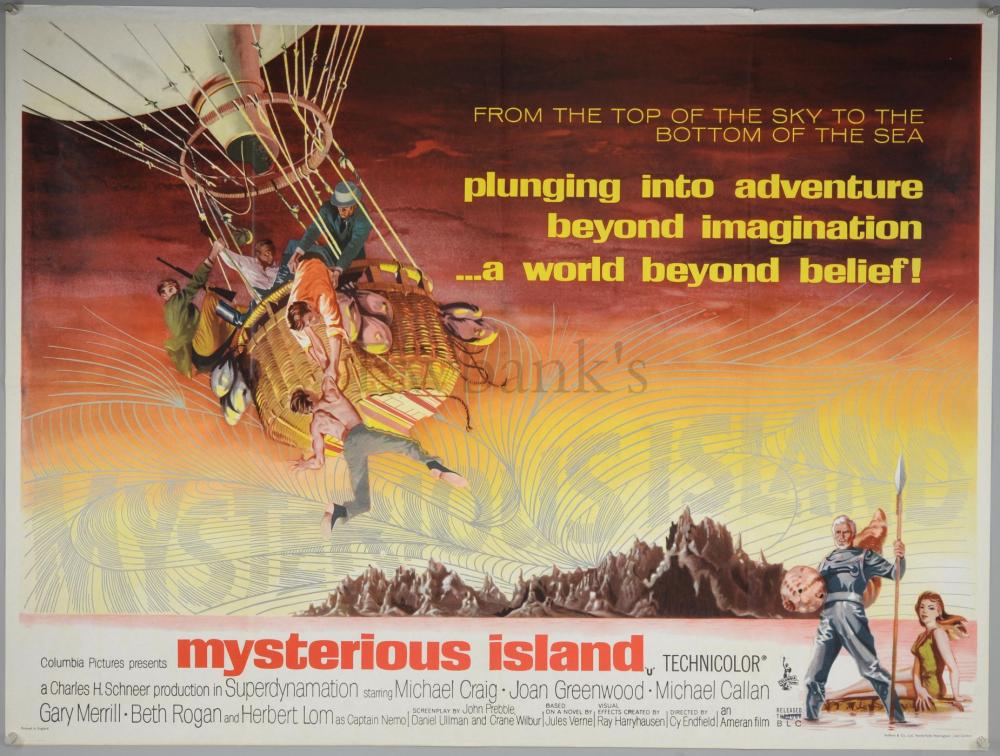
Columbia Pictures released Mysterious Island in 1961, technically based on the Verne novel that served as a sequel to 20,000 Leagues. The story follows five Northern prisoners of war captured by the Confederacy during the American Civil War who escape by hijacking a balloon, only to find themselves caught in a storm and marooned on an unknown volcanic island… later revealed to be the secret hideaway of Captain Nemo, and home port to the Nautilus.
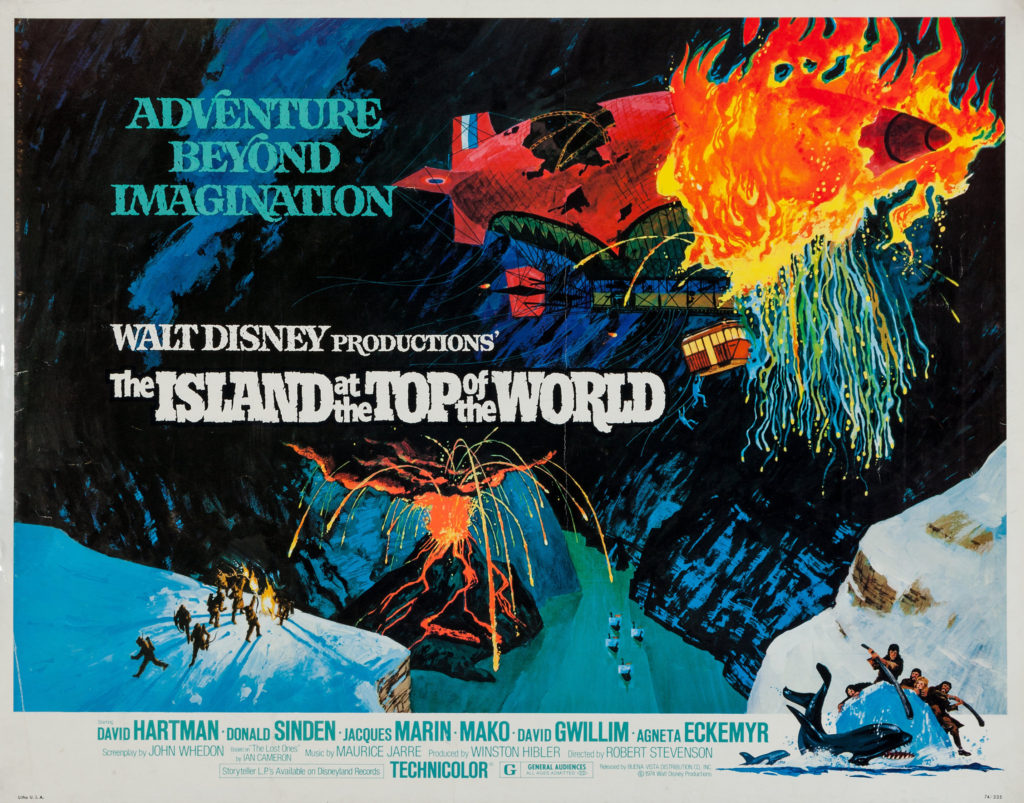
You might consider Disney’s 1974 film The Island at the Top of the World a return to the genre. Though it wasn’t based on a Jules Verne story, it was clearly Disney’s best impression of one. Set in the early 20th century, it followed a group of adventurers aboard the crimson red Hyperion airship who discover a lost island in the Arctic, inexplicably home to a surviving culture of Vikings.
Adaptations and attractions
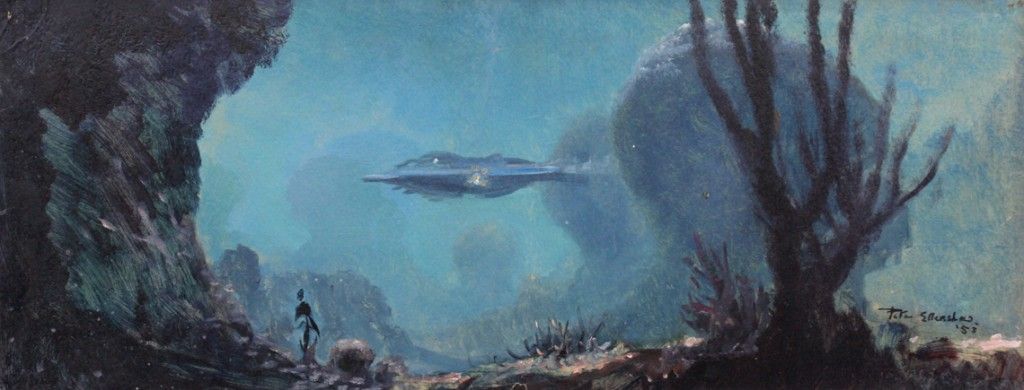
Vingt mille lieues sous les mers. De la Terre à la Lune. Le tour du monde en quatre-vingts jours. L’Île mystérieuse. Voyage au centre de la Terre.
This much is clear: the fantasy sci-fi fables of Jules Verne had created a rich, romantic, cinematic world filled with compelling sights, indescribable places, unthinkable adventures, and spectacular other worlds… So it’s easy to imagine why when Disneyland opened in 1955 – just a year after Walt’s 20,000 Leagues film – Jules Verne was one of the rare intellectual properties built right into the park…
We’ll set course for Disney’s long-running attempts to incorporate the voyages extraordinaires on the next page…


